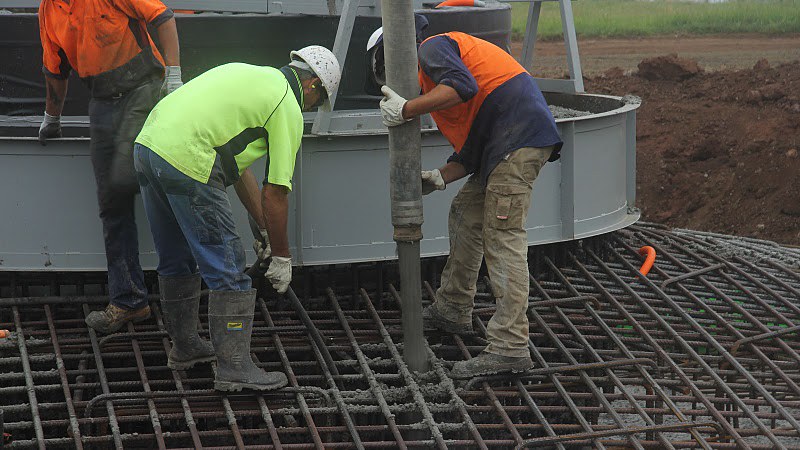|
|
What to Expect During Your Concrete Project: From Prep to Pour
|
When you hire Concrete Eugene Oregon for a new driveway, patio, walkway, or repair job, understanding the journey from preparation through pouring—and beyond—helps you feel confident, informed, and ready for your project. In this article, we’ll walk step‑by‑step through the process you can expect when you book a concrete project with us. We’ll also point out what makes working in Eugene, Oregon unique, and how we manage challenges like weather, soil, drainage, and scheduling.  Why a Clear Process MattersConcrete work may appear straightforward—mix, pour, let it harden—but the reality is that dozens of critical decisions, steps, and safeguards take place behind the scenes. A single misstep during site prep, drainage design, form setting, or curing can jeopardize durability, appearance, or structural integrity. A predictable, well-managed process ensures:
At Concrete Eugene Oregon, our promise of excellence means we pay attention to every detail—from excavating the subgrade to finishing texture and curing. Step-by-Step: From Prep to Pour & BeyondBelow is a breakdown of each major phase, with what you should expect and how we execute it. 1. Initial Consultation & Site AssessmentPurpose: to understand your goals, constraints, and site conditions.
Once you approve the scope and contract, we schedule your project and begin design. 2. Design & PlanningPurpose: finalize concrete layout, drainage, structural reinforcement, and logistics.
With design confirmed and materials scheduled, we move to physical site work. 3. Site Prep & Subgrade WorkPurpose: create a stable, drained base to support concrete.
Getting the subgrade right is one of the most critical steps—if it fails, the concrete above will crack, settle, or degrade prematurely. 4. Formwork & ReinforcementPurpose: contain the concrete and impart structural strength.
5. Concrete Placement (Pouring)Purpose: deliver, place, consolidate, and finish the concrete.
At this stage, care is essential so that concrete is placed evenly and without cold joints. 6. Finishing & TexturingPurpose: produce the desired surface appearance, texture, and durability.
7. Curing & ProtectionPurpose: ensure the concrete develops full strength and durability.
8. Final Inspection & CleanupPurpose: deliver your finished concrete ready for use.
Table: Typical Timeline & Deliverables of a Residential Concrete Project
(Note: Project duration depends on size, weather, permit delays, soil conditions, and finishing complexity.) Special Considerations for Eugene, Oregon & Local ClimateBecause Concrete Eugene Oregon works in the Willamette Valley region, several local factors influence the project: Seasonal Weather & RainEugene gets significant rainfall, especially from fall through spring. Pouring concrete during the rainy season carries risks: overwatering the surface, washouts, slower curing, and surface defects. We typically schedule pours in the drier months (late spring through early fall) to reduce risk. But because weather in Oregon can be unpredictable, we always monitor forecasts and set up protective covers or tents when needed. We also avoid pouring if forecast shows rain during the first curing period. Freeze-Thaw Protection & ExpansionEven though major freezing is less common here than in harsher climates, the occasional subfreezing night means we must protect freshly poured concrete from freezing during early curing. We sometimes use insulating blankets, form insulation, or protection coverings. Proper air entrainment (adding small air bubbles in the concrete mix) is essential in this climate to resist freeze-thaw damage. Soil & Drainage ChallengesThe native soil in areas around Eugene may have clay content or poor drainage. Subgrade preparation must ensure water does not accumulate under the slab. Where drainage is poor, we may install subdrain systems or enhance base layers. We always grade the slab to direct surface water away from structures and toward safe drainage paths. Permits & Local CodesSome concrete projects require permits—especially for driveways, sidewalks, or structural slabs. We help you secure them and ensure the work meets Eugene’s municipal or county regulations (e.g. slopes, sidewalk transitions, curb alignment, guttering). Also, sidewalk or civic work may require ADA compliance, which we factor in during design. Common Challenges & How We Mitigate Them
How Concrete Eugene Oregon Operates DifferentlyOur value lies not just in pouring concrete, but in doing it the right way—meticulously, reliably, and adapted to Eugene’s environment.
What You Should Do to Prepare as a ClientTo make the process smoother, here are steps you can take before your project begins:
Final Thoughts & What Comes After PouringOnce the pour is done and curing begins, your job shifts to maintenance and care:
A well-executed concrete job can last for decades with minimal repair. The difference lies in how well the project was planned, how rigorously it was executed, and how conscientiously it was cured. At Concrete Eugene Oregon, our aim is not simply to get concrete on the ground, but to deliver a functional, beautiful, and lasting surface you can rely on. From the first site meeting to final walk-through, we guide you every step of the way—and we don’t consider the job finished until you’re fully satisfied. |
|